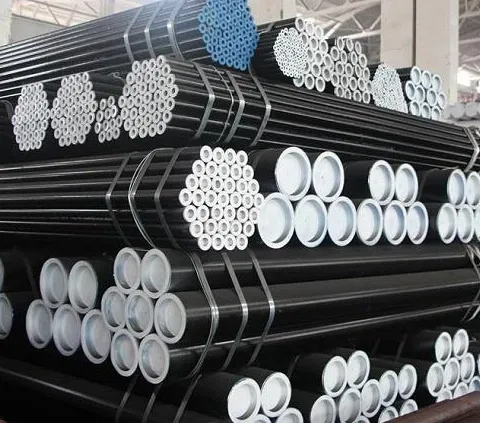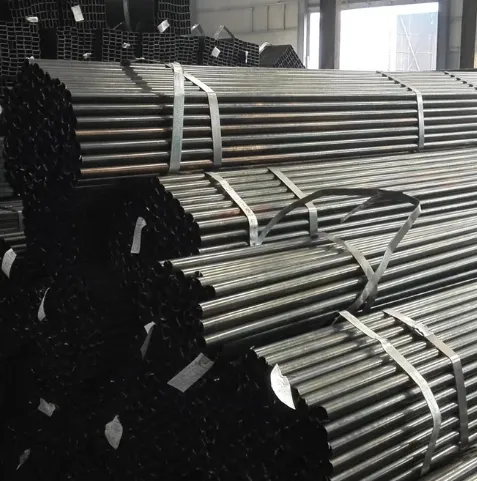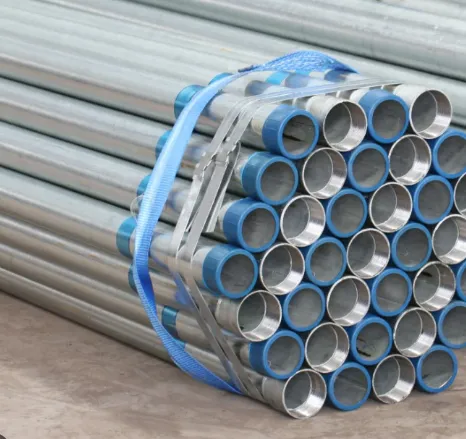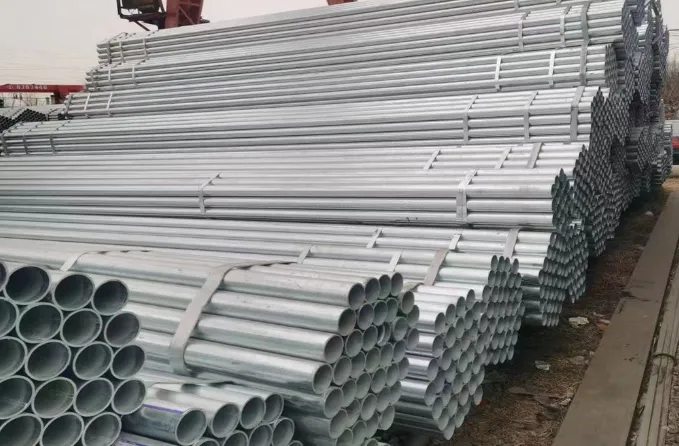ASTM A53 PIPE Material composition
Carbon (C) : Usually the content is about 0.25%-0.30%, carbon is an important element affecting the strength and toughness of steel, in this range to ensure that the steel pipe has a certain strength and processing properties.
Manganese (Mn) : The content is generally 0.60%-1.05%, manganese can improve the strength and toughness of steel, but also improve the thermal processing performance of steel.
Silicon (Si) : the general content is 0.15%-0.30%, silicon mainly plays a deoxidation role in steel, which can increase the strength and hardness of steel.
Sulfur (S), phosphorus (P) : sulfur content is usually ≤0.05%, phosphorus content ≤0.045%, they are harmful elements, the content is too high will lead to the toughness of steel decline, increase cold brittleness and hot brittleness, need to be strictly controlled.
ASTM A53 PIPE Manufacturing process
Seamless steel pipe: The use of perforation, rolling and other processes, the entire pipe wall without weld, with high strength and sealing, suitable for high pressure, high temperature and other pipe requirements of the occasion.
Welded steel pipe: by rolling steel plate or steel strip into a tube and welding, according to different welding methods can be divided into resistance welding (ERW), submerged arc welding (SAW) and so on. Welded steel pipe has high production efficiency and low cost, and is widely used in the field of general fluid transportation and structural support.
ASTM A53 PIPE Mechanical property
Tensile strength: The tensile strength of grade A steel pipe is not less than 330MPa, and the tensile strength of grade B steel pipe is not less than 415MPa. The high tensile strength enables the steel pipe to withstand greater tension, ensuring that it will not break easily when transporting fluid or as a structural part.
Yield strength: The yield strength of grade A steel pipe is not less than 205MPa, and the yield strength of grade B steel pipe is not less than 240MPa. The yield strength is a measure of the steel pipe resistance to plastic deformation, reaching the corresponding standard can ensure that the steel pipe in the normal use of the process will not occur excessive deformation.
Elongation: According to the specifications and types of steel pipes, the elongation is generally about 20%-30%. The elongation rate reflects the plasticity and toughness of the steel pipe, and the high elongation rate means that the steel pipe can have a certain deformation ability when it is subjected to external force, and it is not easy to be brittle.
ASTM A53 PIPE Surface treatment
Black tube: that is, the original steel pipe without surface treatment, the surface retains the natural state after rolling or welding, there may be oxide skin, etc., generally used for occasions where the corrosion resistance is not high or further processing is required.
Galvanized pipe: through hot dip galvanizing or electric galvanizing process on the surface of the steel pipe plated with a layer of zinc, zinc layer can effectively prevent rust corrosion of the steel pipe, extend the service life, often used in building water supply, gas transmission and other areas requiring corrosion resistance.
-
Cangzhou Yulong Steel Co., Ltd.
-
Phone:
+86 13303177267 -
Email:
admin@ylsteelfittings.com
- English
- Arabic
- Italian
- Spanish
- Portuguese
- German
- kazakh
- Persian
- Greek
- French
- Russian
- Polish
- Thai
- Indonesian
- Vietnamese
- Zulu
- Korean
- Uzbek
- Hindi
- Serbian
- Malay
- Ukrainian
- Gujarati
- Haitian Creole
- hausa
- hawaiian
- Hebrew
- Miao
- Hungarian
- Icelandic
- igbo
- irish
- Japanese
- Javanese
- Kannada
- Khmer
- Rwandese
- Afrikaans
- Albanian
- Amharic
- Armenian
- Azerbaijani
- Basque
- Belarusian
- Bengali
- Bosnian
- Bulgarian
- Catalan
- Cebuano
- China
- China (Taiwan)
- Corsican
- Croatian
- Czech
- Danish
- Esperanto
- Estonian
- Finnish
- Frisian
- Galician
- Georgian
- Kurdish
- Kyrgyz
- Lao
- Latin
- Latvian
- Lithuanian
- Luxembourgish
- Macedonian
- Malgashi
- Malayalam
- Maltese
- Maori
- Marathi
- Mongolian
- Myanmar
- Nepali
- Norwegian
- Norwegian
- Occitan
- Pashto
- Dutch
- Punjabi
- Romanian
- Samoan
- Scottish Gaelic
- Sesotho
- Shona
- Sindhi
- Sinhala
- Slovak
- Slovenian
- Somali
- Sundanese
- Swahili
- Swedish
- Tagalog
- Tajik
- Tamil
- Tatar
- Telugu
- Turkish
- Turkmen
- Urdu
- Uighur
- Welsh
- Bantu
- Yiddish
- Yoruba

Write your message here and send it to us
Related News
-
Jul . 23, 2025Space-Saving Connection Mastery: How 1/2 Pipe Nipple’s 50mm Short Design Solves Dense Piping Installation Challenges?In the labyrinth of industrial machinery, where pipes weave through 200mm-wide gaps and every millimeter counts, the battle against cramped spaces often stalls projects.
-
Jul . 23, 2025Shale Gas Extraction Impact Resistance: How ASME B16.47 Flange's Hub-Thickened Design Passes Seismic Testing?In the high-stakes realm of shale gas extraction, where seismic activity and operational vibrations threaten pipeline integrity, the ASME B16.47 flange emerges as a critical safeguard.

















